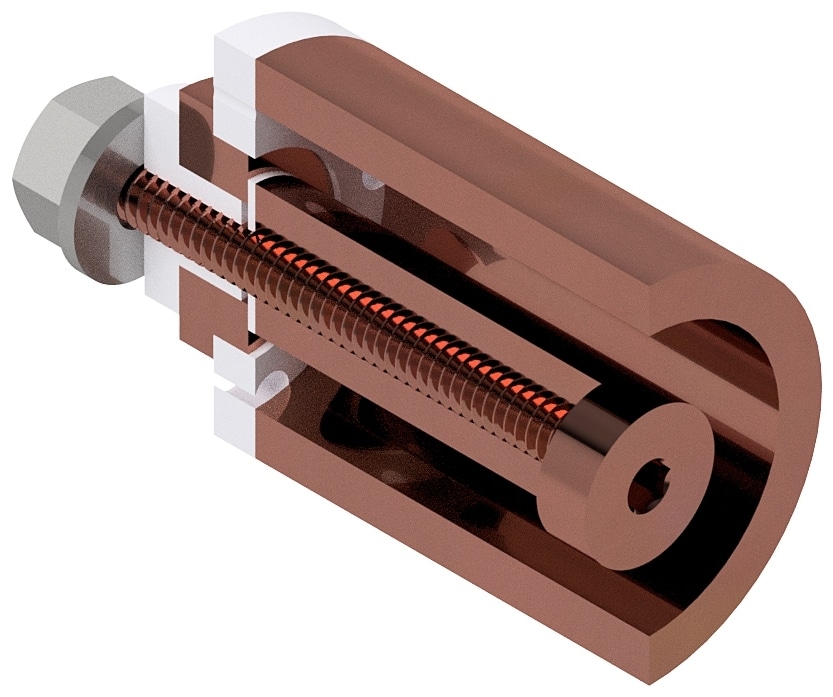Feb 7 2019
In the field of space exploration, CubeSats have evolved as major players. In fact, in the past few years, CubeSats have been increasingly used for commercial launches due to their compact size and comparatively low cost. However, the process to force such kinds of satellites in space comes with several challenges.
 This rendering depicts a device that electromagnetically accelerates plasma to produce thrust—contrasting typical chemical thrusters. In order to create the propellant plasma, a low energy surface flashover (LESF) technique is employed at the beginning of the channel. (Rendering provided) (Image credit: Purdue University)
This rendering depicts a device that electromagnetically accelerates plasma to produce thrust—contrasting typical chemical thrusters. In order to create the propellant plasma, a low energy surface flashover (LESF) technique is employed at the beginning of the channel. (Rendering provided) (Image credit: Purdue University)
Researchers at Purdue University have now come up with a novel technology to overcome one of those major issues—the ambiguity of the ignition system that starts the CubeSats’ propulsion system. Present-day ignition systems are not reliable and are prone to irreversible and considerable damage during the satellite’s lifespan.
We have created a lower energy triggering technology that uses nanosecond-long pulses, that allows the ignition and propulsion systems to function reliably for a very long time. Specifically, we have successfully tested the ignition system for greater than 1.5 million pulses and it remained operational and almost intact after the test. This is a giant leap for extending the lifetime of electric propulsion systems for CubeSats.
Alexey Shashurin, Assistant Professor, School of Aeronautics and Astronautics, College of Engineering, Purdue University
The researchers’ study aligns perfectly with Purdue’s Giant Leaps celebration, commemorating the global advancements of the university in space exploration as part of its 150th anniversary. This is one among the four themes of the Ideas Festival, which part of the yearlong celebration, was created to highlight Purdue University as an intellectual center that solves real-world problems.
The CubeSats’ overall popularity is largely fueled by the significant developments in the miniaturization of electronic sensors and components that enable a whole new kind of measurements and space missions utilizing a CubeSat.
It is exciting to tackle these new challenges presented on spacecraft of a much smaller scale than in previous years. The next step for the CubeSats is to have a robust propulsion system for necessary maneuvering and station-keeping duties.
Alexey Shashurin, Assistant Professor, School of Aeronautics and Astronautics, College of Engineering, Purdue University
In association with the Purdue Office of Technology Commercialization, Shashurin and his group have filed a provisional patent on the technology.
The study, reported in the January 10th, 2019 edition of Plasma Research Express, was also presented during the American Institute of Aeronautics and Astronautics SciTech Forum in San Diego last month.
The researchers are now planning to take part in the I-Corps program of National Science Foundation; the program provides support for performing in-depth customer discovery with an eventual objective to identify industrial partners and thus commercialize the novel technology.